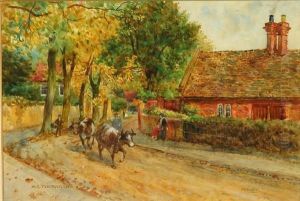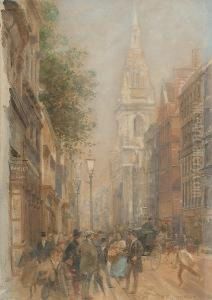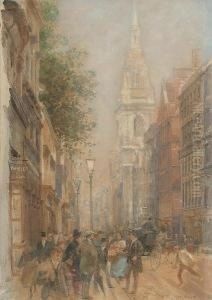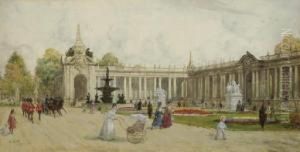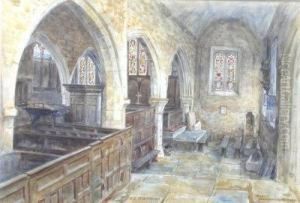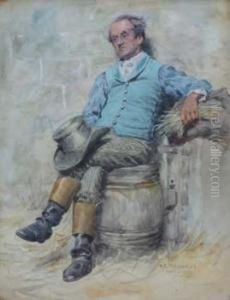Henry Edward Tidmarsh Paintings
Henry Edward Tidmarsh was an English artist whose work primarily encompassed watercolor painting, known for his delicate and detailed approach to landscapes, floral subjects, and occasionally portraits. Born in 1870 in England, Tidmarsh developed an early interest in art, which was nurtured through formal education in the arts. His talent in watercolor painting distinguished him in the late 19th and early 20th centuries, a period when watercolor was gaining recognition as a serious medium alongside oil painting.
Throughout his career, Tidmarsh exhibited a keen observation of natural beauty, which he translated into his artworks with precision and a gentle touch. His floral watercolors, in particular, showcase a blend of accuracy and artistic flair, making them highly appreciated among art collectors and enthusiasts of the time. Tidmarsh's landscapes, on the other hand, capture the essence of the English countryside with a serene and almost idyllic quality, reflecting the artist's personal connection and affection for rural England.
Tidmarsh was active during a time of significant change in the art world, with movements like Impressionism and Post-Impressionism influencing artists globally. However, he remained largely traditional in his style, focusing on the mastery of light, shadow, and color within the confines of watercolor. His works were exhibited in various galleries, earning him recognition and respect among his peers.
Henry Edward Tidmarsh's contribution to English art, especially in the realm of watercolor painting, is noteworthy. Though he may not have achieved the same level of fame as some of his contemporaries, his work remains a testament to the skill and dedication he possessed. Tidmarsh passed away in 1939, leaving behind a legacy of art that continues to be admired for its beauty and classic appeal. His paintings, often characterized by their tranquility and meticulous attention to detail, remain sought after by collectors and are featured in various art galleries and museums, preserving his place in the history of English art.
